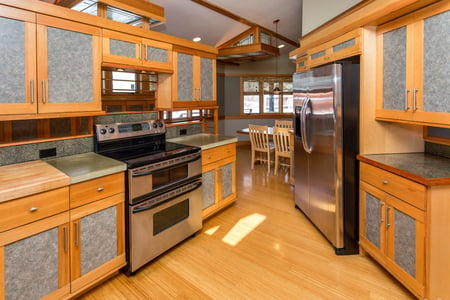Owner Devan Kaufman shares his philosophy of design and what it means to create a home - not just a house.
In our 20 years in business, Kaufman Construction has earned a reputation for superior design. That's due in part to the skilled team of craftsmen that work for and with us on every project. But it's also the result of the inherent value we place on design.
Occasionally, we'll have a remodeling client come to us with a plan already in mind and the assumption that no design services are needed. As we've written in previous blogs, no project is accomplished without someone's design philosophy getting stamped on it. There are simply too many details, too many choices to be made, to assume even the most basic remodel could be completed without design decisions taking place.
That realization came to us early in our company's history, and it's why skilled design has become a hallmark of what we do. The well-designed home has so much more to do with the way that home makes you feel than it does with style or taste. And to answer that question - what does home feel like to you? - we've learned to ask a lot of other questions that help reveal each homeowner's vision.
I was blessed with a natural understanding of how different design elements affect the way spaces feel. As a builder and remodeler, I began incorporating these ideas into my first plans, not even aware that what I was doing was unusual until an architect complimented me on the beauty and cohesiveness of my work. Then, I discovered the work and writing of architects like Frank Lloyd Wright and Sarah Susanka, and it seemed as if they were expressing what I had always known.
This is why we design the way we do:
1. Good design isn't about "form" over "function" or the other way around.
Form and function are unbreakably connected. A functional space should be beautiful, or it doesn't fully serve the homeowner. Our sense of comfort and satisfaction with our homes is deeply tied to whether we find them pleasant places to be. Yet an aesthetically beautiful space that is difficult to use or uncomfortable to spend time in is no better designed than an unattractive, efficient space.

2. It isn't all about the square footage.
A small plan doesn't guarantee a cozy home any more than an open plan assures a sense of peace. Too much open space can cause a home to feel cavernous and intimidating. Tiny, chopped up rooms can feel claustrophobic. But a well-designed home offers a sense of openness, with sight lines from room to room, while creating defined spaces through varied ceiling heights and framed openings between spaces.

3. The plan should include the entire space, not just the floor plan.
The layout and size of the room is just one small part of a well-designed space. What architects call "spatial concepts" carry even more weight in creating that sense of home. The visual weight created by color and texture can make a large room feel cozy or a small room feel spacious; the layers of openings and surfaces visible from one room to the next make the entire home feel connected and open, even when spaces are defined by framed openings and changes in ceiling height.

These are just a few of the important principles that come into play for every design. Those principles can only be applied well when we take the time to get to know our clients. Learning how homeowners live, what they value, what they love and don't love about their current space - these are the kinds of questions that lay the groundwork for how we interpret each design element in their home - and that answer that ultimate question of what home feels like to them.
A design service shouldn't just be a marketing tool. Finding a builder or remodeler who respects the way architecture and design will affect your lifestyle can be the difference between a nice house and the home of your dreams.







